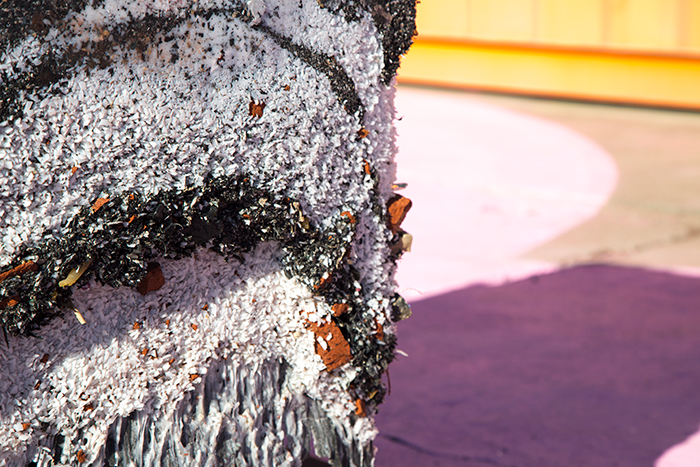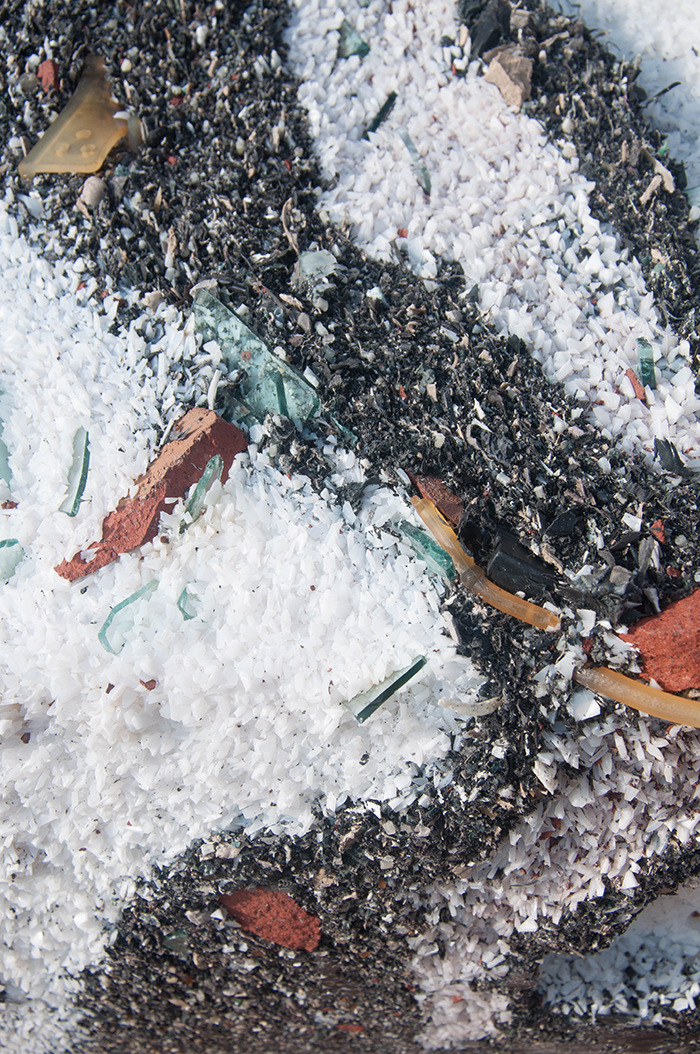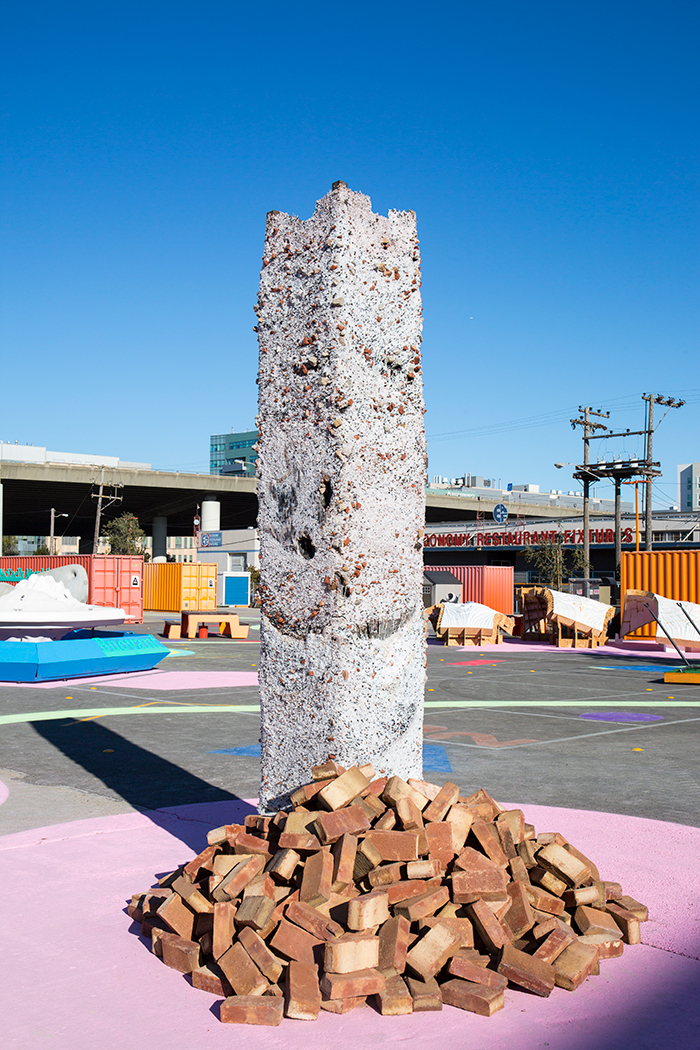
Clastic Order
2017
Clastic Order is a series of free-standing columns made by combining reclaimed construction debris with post-industrial plastic waste, and the first full-scale demonstration of T+E+A+M’s ongoing research on the strategies and aesthetics of reassembly.
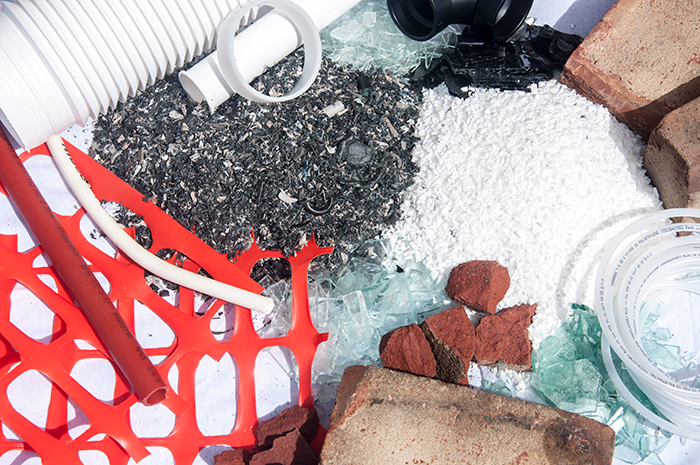
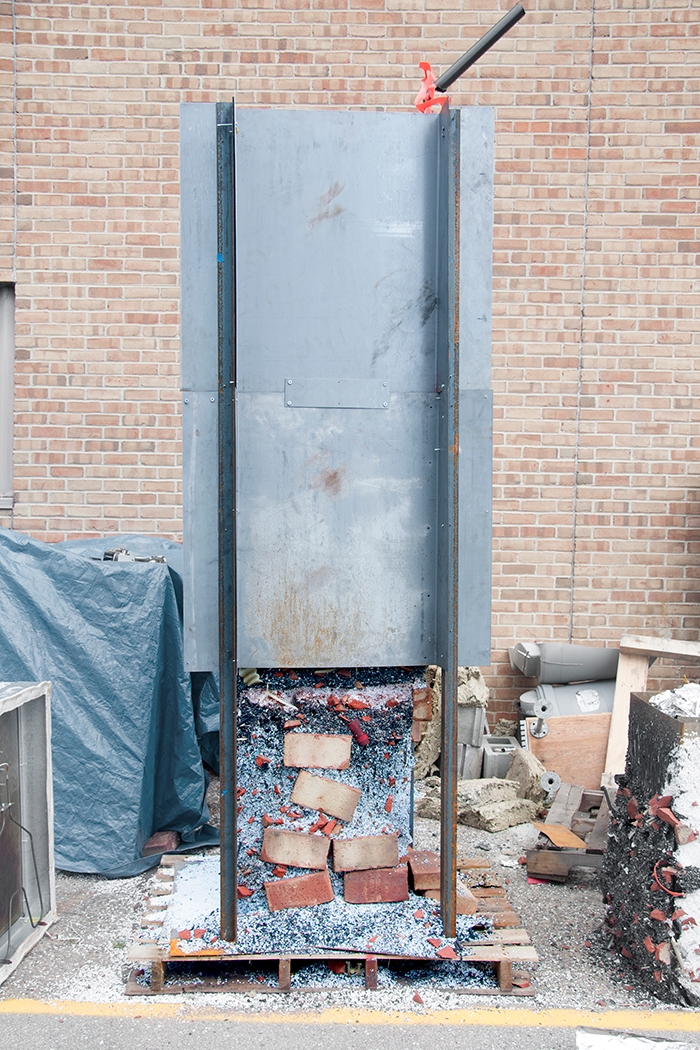
Reassembly brings together material fragments that have prior values, uses, and histories, into new architectural forms. As a strategy for material reuse at the scale of building, reassembly cultivates a visual and material aesthetic through the unresolved relationship of parts to whole.
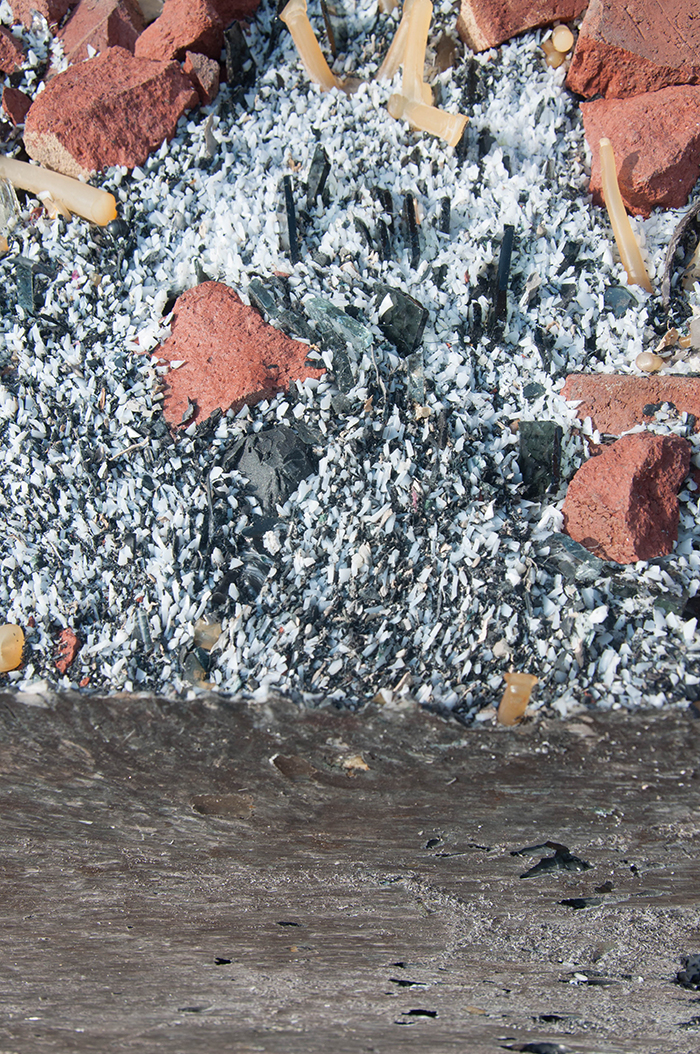
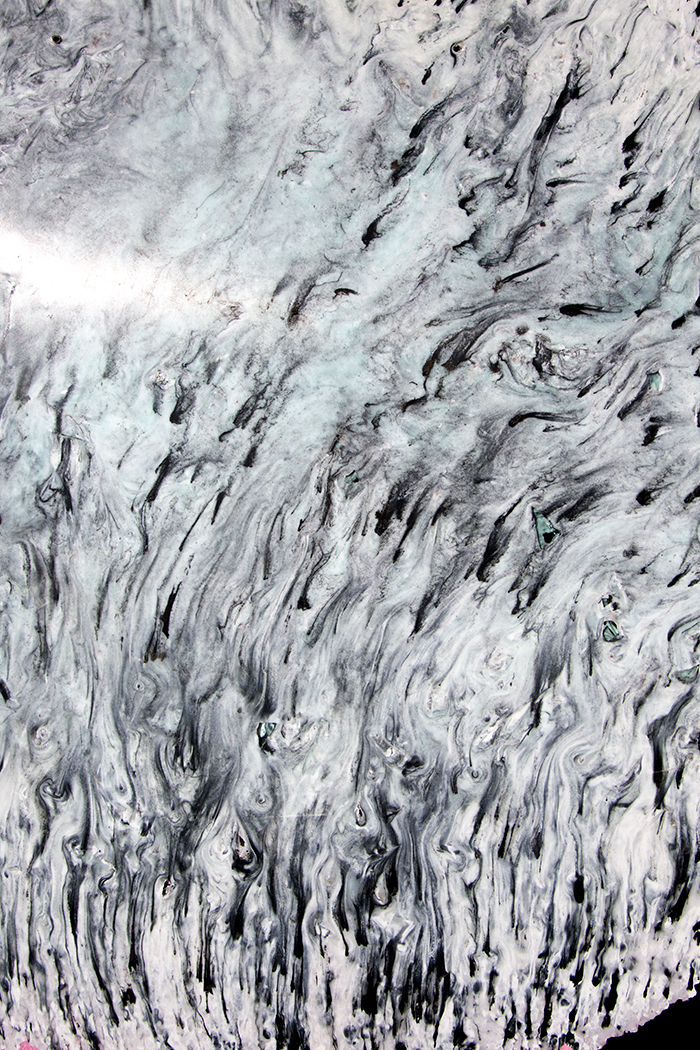
The geological term clastic describes a type of stone made of older rock fragments, or clasts. Here, familiar fragments of buildings (brick, concrete, glass, pipes, and fittings) are the clasts which mottle the stone-like surface of the columns. Each column is monolithic, fabricated as a continuous cast with a process similar to slip-forming concrete, a technique used to cast uninterrupted structures such as building cores, shear walls, and silos. Each column cast begins on the ground in an insulated mold filled will loose material. The plastic is brought to its melting point at which time it binds the inorganic aggregates into a solid mass. The heat sources and formwork are gradually raised as each section is completed, producing continuous full-scale columns.
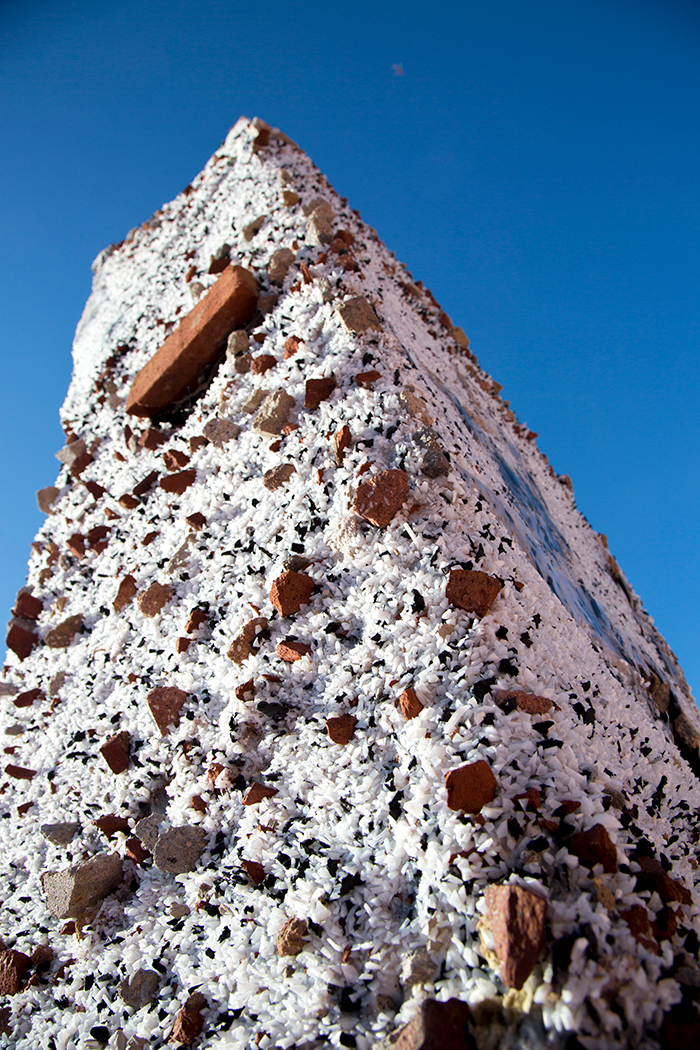
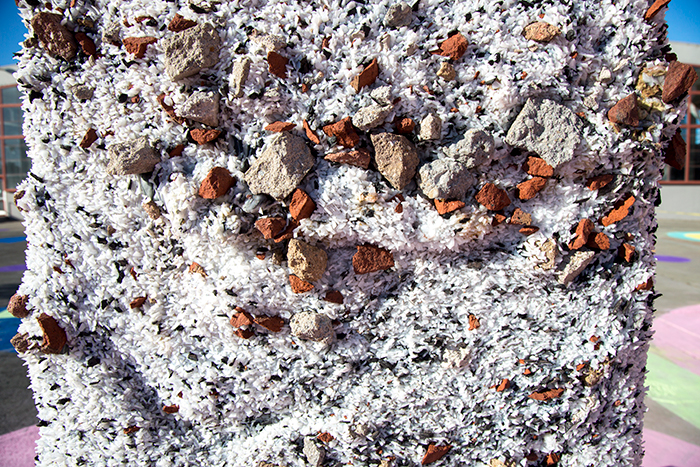
While the classical orders of architecture established mathematical rules of proportion, spacing, and sequence of parts, Clastic Order suggests an approach to design based on material behavior under heat and gravity. By varying the ratios of components in the mixture and the application of heat, a range of colors and textures is produced across the columns. Since the waste plastics and building debris are reclaimed locally, the material properties of the resulting casts reflect regional waste streams.
